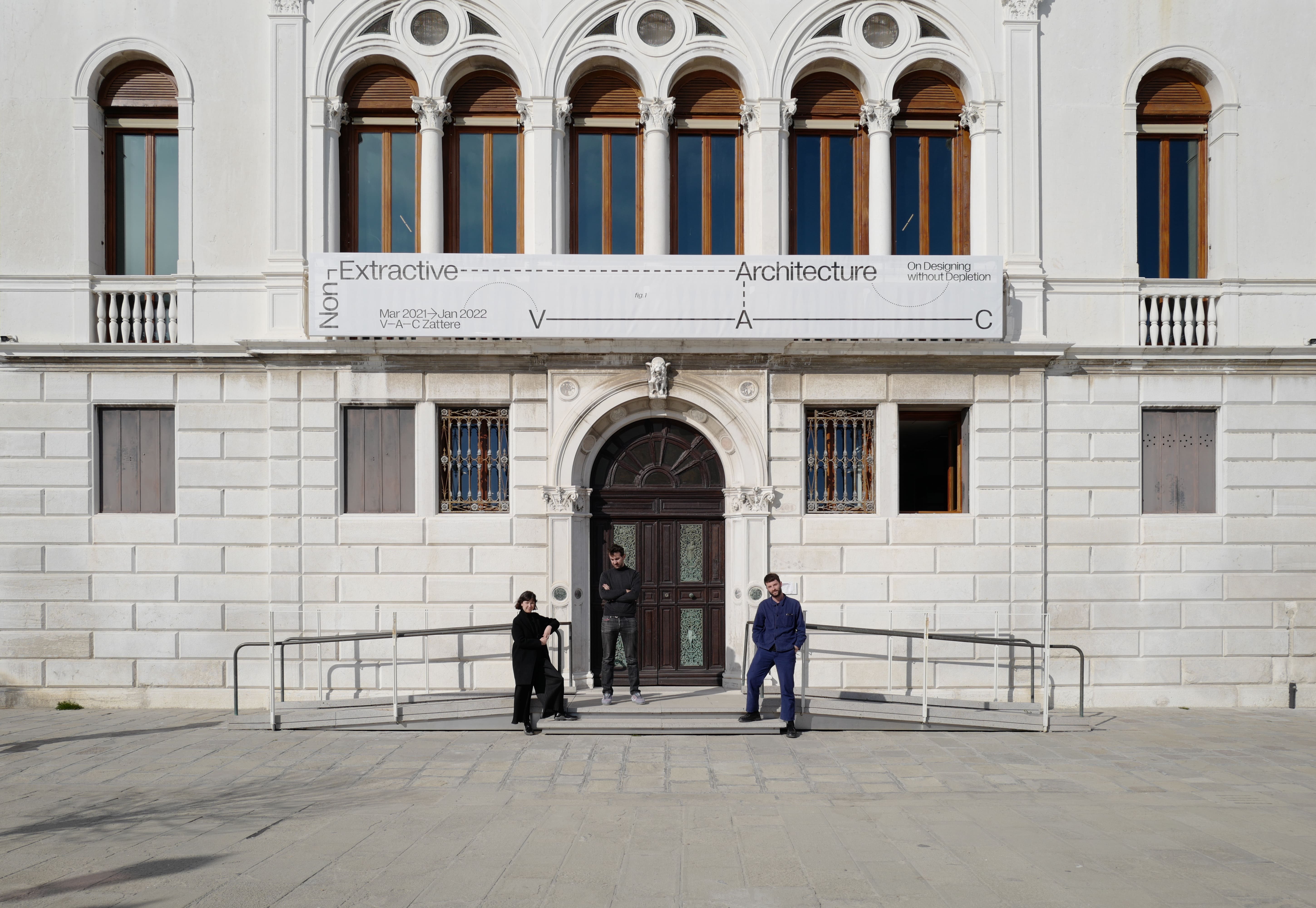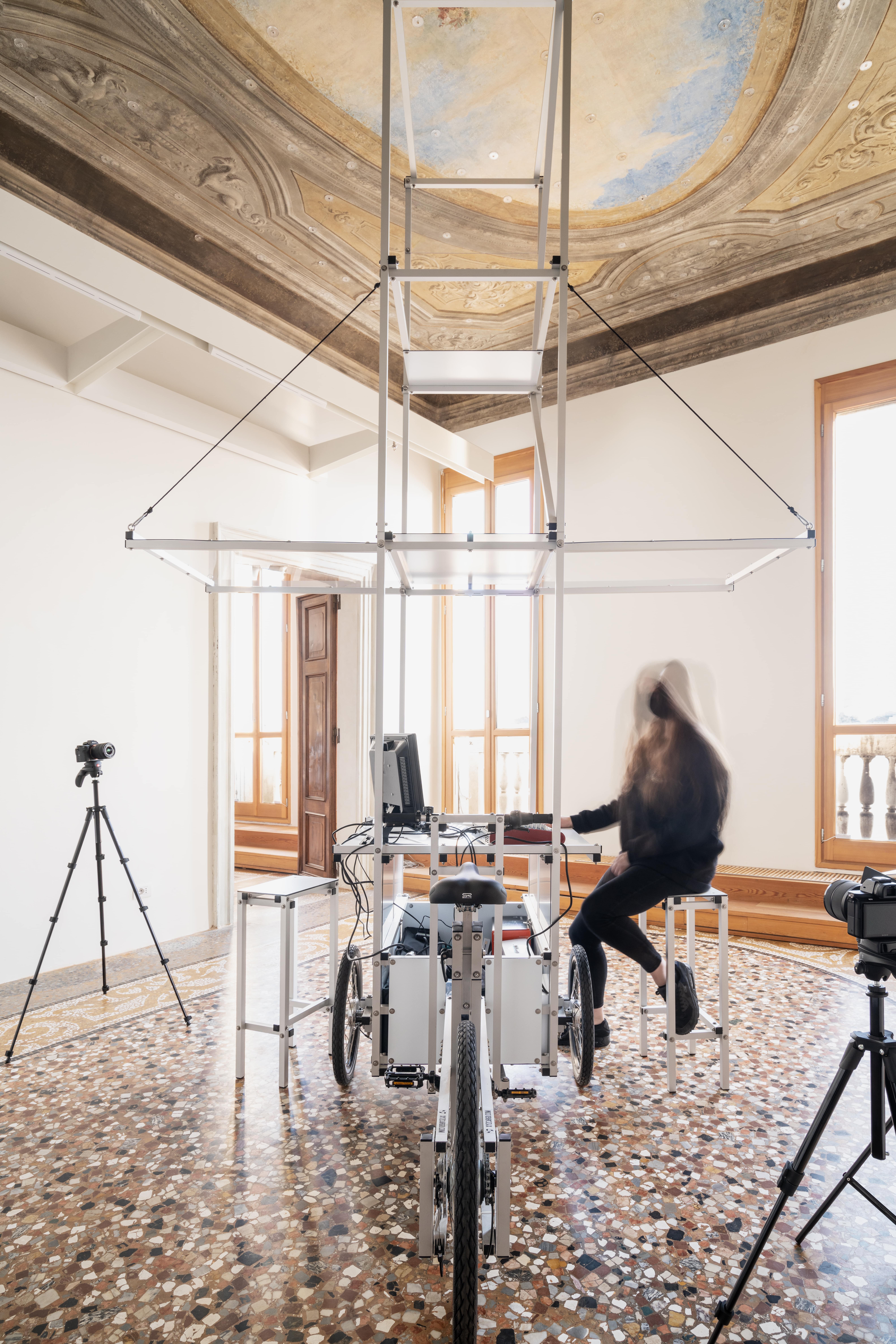In the race of world urbanization, humanity is running short of vital resources such as sand, water, stone and steel. Finding a new trajectory to approach material supply chains can help find alternative practices and balance the ecosystem.

Ph. Marco Cappelletti
V-A-C Zattere announced a year-long exhibition program «Non-Extractive Architecture: On Designing without Depletion» curated by Joseph Grima and Space Caviar, which has opened to visitors since the 6th of May 2021.
The project consists of residencies, workshops on materials, lectures and a publishing platform that look at contemporary architectural production as the endpoint of a complex chain of activities. Asked about the concept underpinning the project, the architect and curator Joseph Grima answered: «The idea of non-extractive architecture is absolutely not new, and it would be tempting to argue that it's always been there - there are plenty of studies into how vernacular traditions all over the world have evolved to establish a balance between the needs of a community and the equilibrium of the environment it is situated in».
The program rethinks the construction industry from its basics, in the belief that better alternatives exist. It can be followed through three elements: research lab, exhibition, and the book.
We asked Grima whether he thinks Venice is a special location for architectural research: «Venice - he replies - is a city of stone extracted from the ground, built onto wooden piles driven into the water. In one example, the project here begins to see the city upside down – what if we kept the rock in the ground and moved the trees out of the water and as our buildings instead? »

Charlotte Malterre-Barthes, Scales of Extraction, after Morphosis, 2-4-6-8 House Parts drawing.
Non-Extractive Architecture: On Designing without Depletion Vol.1, Space Caviar.
The Research Lab has transformed the Palazzo delle Zattere into an active laboratory for the definition and development of Non-Extractive Architecture. The notion of movement is cross-cutting through the project. Resident researchers physically engage with real-time testing of materials and ideas.
The processes through which the research is transmitted intend to be mobile. Three vehicles have been designed for the exhibition by N55/Ion Sørvin and Till Wolfer to represent the flow of activity in the exhibition — printing research in the publishing station, reading in the mobile library, publishing and sharing the work through the broadcast station. These vehicles are built to travel and communicate the research developed in Venice to a global public that extends beyond the Palazzo.
XYZ CARGO BROADCASTING STATION by N55/ Ion Sørvin and Till Wolfer
XYZ CARGO MOBILE LIBRARY by N55/ Ion Sørvin and Till Wolfer with Non-Extractive Architecture: On Designing without Depletion Vol.1, Space Caviar
Ph. Marco Cappelletti
Non-Extractive Architecture: On Designing without Depletion. Space Caviar, V-A-C Zattere
XYZ CARGO MOBILE LIBRARY by N55/ Ion Sørvin and Till Wolfer
Ph. Marco Cappelletti
«We like to think of the palazzo as an open-door design studio, in which the public can enter and witness the research process firsthand» — claims Grima. «On the walls of the palazzo, we will build a growing network of voices that we hope to connect with over the year-long program as a repository of complementary ideas, none of which is in itself a silver bullet, but each of them can be part of the architect's toolkit as they attempt to make architecture slightly less damaging to the world around it».
As the initial beginning of the program was delayed due to the pandemic, authors decided to use this year as an opportunity. The book «Non-Extractive Architecture: On Designing without Depletion Vol.1» outlines the theoretical framework on which the project is based and unites the series of essays by architects, geographers, historians, economists, urbanists, and philosophers, with multiple perspectives. «There is no singular definition of non-extractive architecture, it's an incredibly complex and nuanced question – the book set out to complicate and expand its definition», Grima comments on the book.

The second edition is planned to collect the cases of people all around the world who are already working on the idea of non-extractive architecture. «What we and many of the authors in this book advocate is not to step back from our identity as creatures of the post-atomic age, but to think harder and longer before resorting to technology».

Upper: Non-Extractive Architecture: On Designing without Depletion Vol.1
Edited by Space Caviar Published by V-A-C and Sternberg Press.
XYZ CARGO PUBLISHING STATION by N55/ Ion Sørvin and Till Wolfer
Ph. Marco Cappelletti
The exhibition is open from Thursday till Tuesday.
From 11:00 till 19:00.
Reservation is obligatory:
zattere@v-a-c.org
+39 0410996840
https://v-a-c.org/en/non-extractive-architecture



